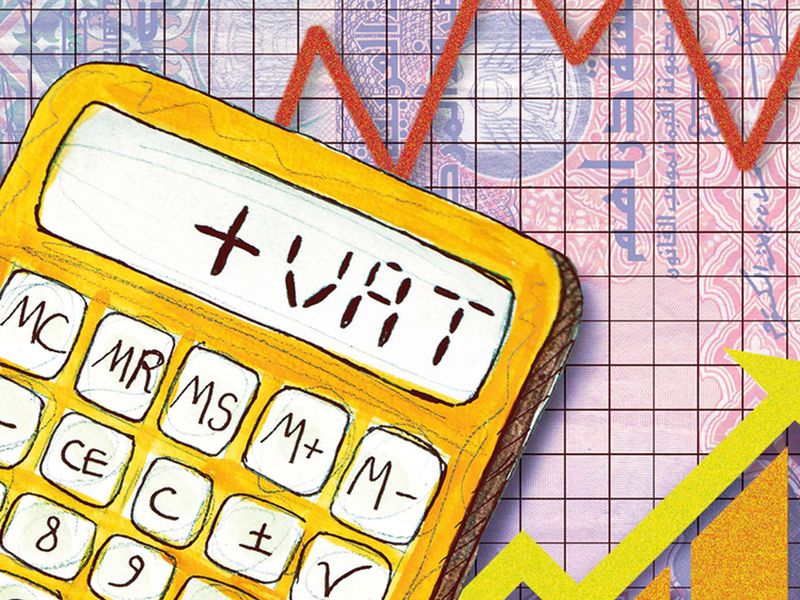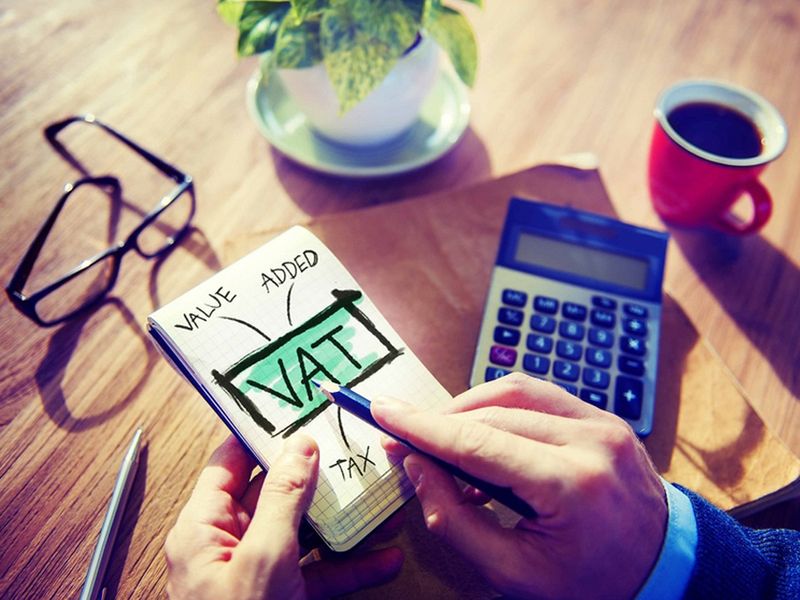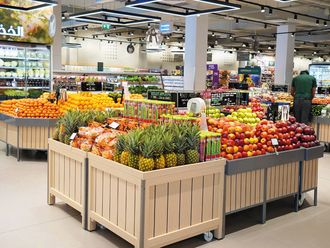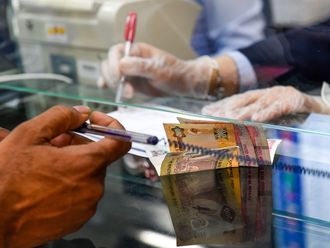
Dubai: In an effort to further diversify their economies away from oil, GCC nations have been rampantly prioritising the introduction of VAT, especially in the current pandemic backdrop. However, how this differently impacts each country and their respective residents is worth understanding.
Increasing tax take (the total amount of money that a government collects in tax) has turned important for countries with lower fiscal reserves, including Oman and Bahrain, and to some extent Saudi Arabia, analysis from consultant PricewaterhouseCoopers’ (PwC) ‘Middle East Economy Watch’, revealed.
VAT has been the main way that Gulf governments have introduced taxation in their respective countries. Currently it exists in three Gulf countries – Saudi Arabia (KSA), the UAE, and Bahrain – and tax excise duties are applied everywhere except Kuwait and Qatar.
However, the GCC is still a very low-tax environment by international standards, analysts at PwC noted.

How did VAT come about in the GCC?
Back in June 2016, all six Gulf Cooperation Council (GCC) member states signed the Common VAT Agreement. It was agreed that each GCC member state would introduce a VAT system at a rate of 5 per cent, one of the lowest rates in the world.
Bahrain introduced its new VAT system in January 2019, while Oman implemented a VAT system earlier this month. While the standard VAT rate for Saudi Arabia is 5 per cent, in an unexpected decision last year, the country hiked its VAT rate from 5 per cent to 15 per cent in July.
The UAE does not levy income tax on individuals. However, it levies corporate tax on oil companies and foreign banks. Excise tax is levied on specific goods which are typically harmful to human health or the environment.
In the UAE, VAT of 5 per cent has been levied on a majority of goods and services since January 2018. Tourists in the UAE also pay VAT at any point of sale. The government of UAE does not collect the tax directly; the companies charge the customers and receive it on behalf of the authorities.
Saudi currently levies an expatriate fee on companies and as well as a dependents fee on foreign nationals. Effective 2017, Saudi Arabia’s expat levy is applicable to dependants and employees if the company they work for hires more foreign nationals than Saudi nationals.
In 2019, VAT and excise tax accounted for more than a quarter of total tax revenues at $24 billion (Dh88 billion). In Saudi Arabia, expat levies phased in since 2017, and raised around $15 billion (Dh55 billion) in 2019.
How does it affect you and your finances?
A taxpayer is effectively collecting the VAT from the consumer for the government. As a result of the rate increase or implementation of any VAT, the amount of VAT that is “managed” by the taxpayer on behalf of the government increases significantly on both the input (cost) and output (revenue) side.
Getting it wrong can have significant financial impacts. The penalty for under-accounting VAT is 50 per cent of the underpaid amount.
For instance, in Saudi Arabia, with a VAT rate of 15 per cent, this means a potential financial impact of 22.5 per cent of the fee received by the taxpayer. Taxpayers should review the VAT treatment of transactions carefully and have documentation in place to support their position.
VAT, being a tax on consumption, is borne by the end-consumer. The rate increase results in an inflation of consumer prices.
In most GCC nations, the VAT regime has a broad base and a single rate, and there are no substitutes. For example in jurisdictions with multiple rates, a consumer may have the possibility to adjust their consumption from products subject to the standard rate to those with a reduced or zero rate of VAT.
Only if the government considers introducing a lower rate or expand the scope for the zero rate of VAT and include – for example – basic necessities, this would reduce the impact of the VAT increase on inflation of consumer prices.
Possibly to counteract the negative effect of the rate increase, governments do exempt certain real estate transactions from VAT and possibly other additional exemptions (as would an introduction of a reduced rate or more zero rating).
However, this would result in a more complex VAT regime that is more costly to administer – both from a tax authority and business perspective.

How to calculate VAT in the UAE?
The formula for calculating VAT is: VAT = Output Tax – Input Tax
OUTPUT TAX
Output tax is the amount received by a seller as a percentage of the selling price of the final product. In the context of UAE VAT, the rate is 5 per cent. For example, selling price of the product or service is Dh200, then Output Tax (VAT collected during resale) will be 200 x 5 per cent = Dh10.00. The output VAT is also called VAT Collected.
INPUT TAX
The amount paid by a buyer as a percentage of the cost price for goods or services used to make a final product. In UAE VAT standard rate is 5 per cent on invoice value.
For example, the cost price of the goods or services is Dh100, knowing the VAT rate is 5 per cent, then Input VAT (VAT paid during buying) will be 100 x 5 per cent = Dh5.00. Input VAT is also called VAT Credit or Recoverable VAT.
VAT PAYABLE
All businessmen should collect VAT on sales, also called output tax, and recover VAT amount paid on the purchase of goods, called input tax. Subtracting input tax from output tax will give the amount that has to be paid to the government.
Company A has purchased raw materials for a total of Dh500,000. Therefore, the input tax will be 5 per cent of the total amount i.e. Dh500,000 x 5 per cent = Dh25,000
Company A sells the goods made up of the raw materials purchased, assume the total amount of sales is Dh800,000. Therefore, the output tax at 5 per cent of the total amount will be: Dh800,000 x 5 per cent = Dh40,000
In this case, the final net VAT payable of Company A to the government will be:
VAT = Output Tax – Input Tax
VAT = Dh40,000 – Dh25,000
VAT = Dh15,000
How does the VAT system work?
Let us understand with an example: (For ease of calculation, let’s assume a VAT of 10 per cent.)
In the above example, bicycle manufacturer Best Bicycles Ltd, pays VAT of Dh100 at the rate of 10 per cent on purchase of raw materials which are required to manufacturer a bicycle. After manufacturing, he sells the bicycles to Top Distributors Ltd at Dh1,500 plus Dh150. In arriving the VAT payable to the government, Best Bicycles Ltd need to adjust the input of 100 with output VAT 150 and the balance 50 will be payable.
Top Distributor Ltd sells the bicycles at Dh2,200 + VAT of Dh220 to Favourite Bicycles Store who is a retailer. Since he has already paid VAT of Dh150 to Best Bicycles Ltd, he will be allowed adjust Input put of Dh150 with output VAT of Dh220 and the balance 70 will be payable to the government. If you observe, the VAT of 70 which he is paying is exactly 10 per cent on value addition of Dh700.
Favourite Bicycles Store is a retail store, he sells the bicycle to Imran who is an end consumer for Dh2,500 with VAT of Dh250. Similar to the above, Favorite Bicycle store adjusts the Input VAT of Dh220 with output tax of Dh2500 and pays balance Dh30 to the government.
Now, if you closely observe, the total tax paid by all parties – A-One Supplies (Dh100) + Best Bicycles Ltd (Dh50) + Top Distributor Ltd (Dh70) + Favourite Bicycles Store (Dh30) is Dh250 which is exactly the same amount of VAT paid by the Imran on purchasing the bicycle. Therefore, the businesses engaged in supply chain will pass on the burden of tax to next stage and ultimately, VAT is paid by the end consumer.








